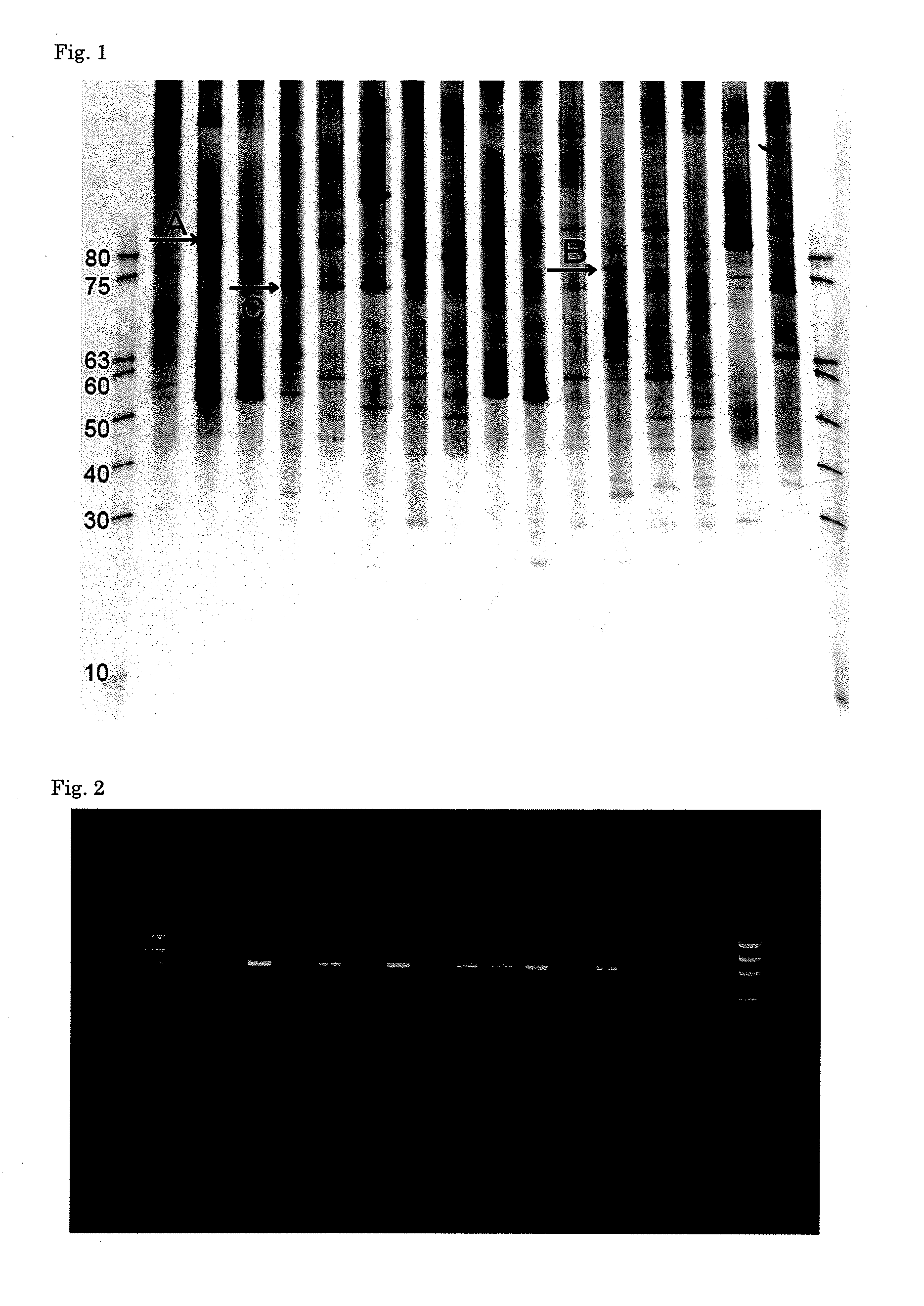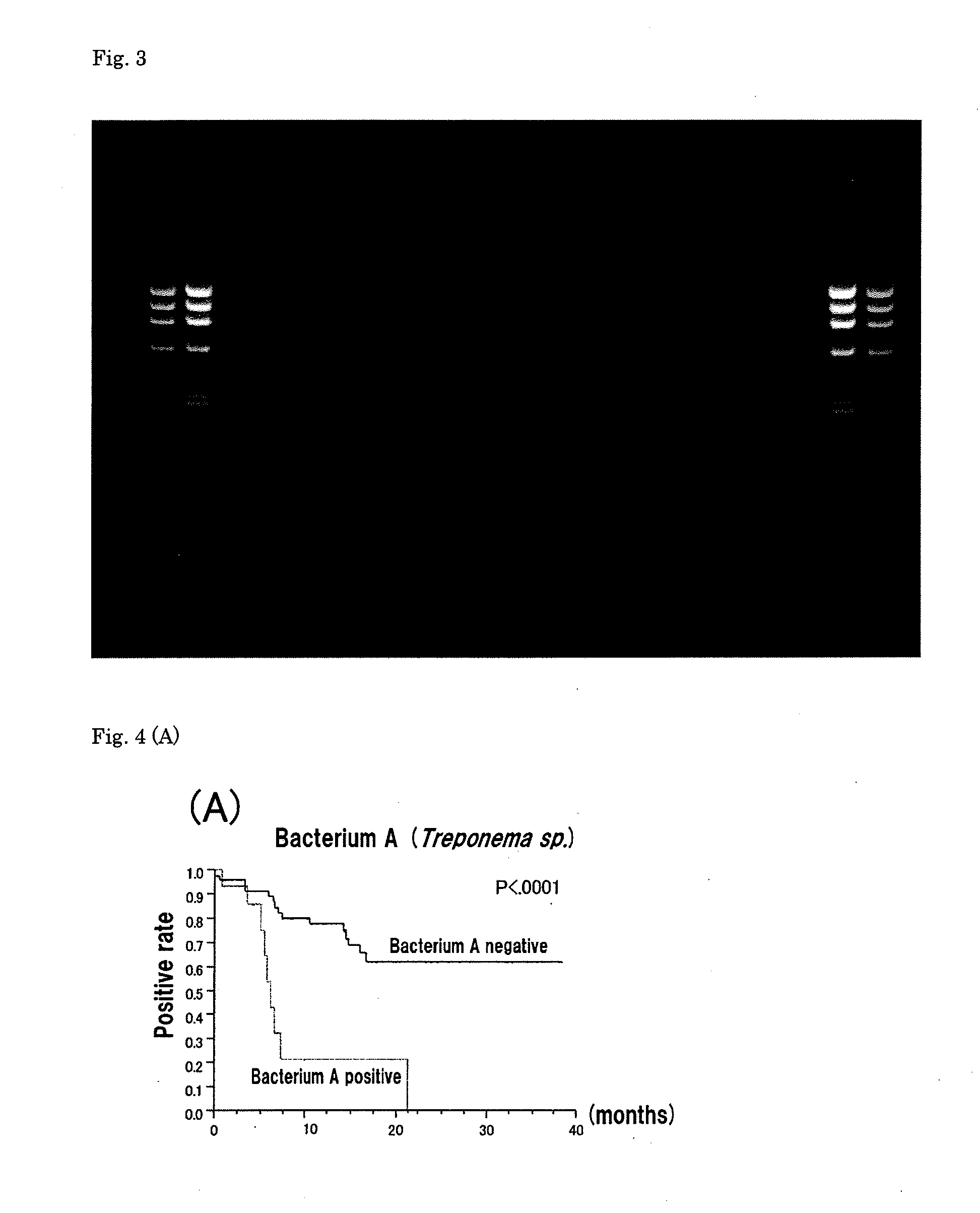Method for detecting presumed iga nephropathy and method for screening iga nephropathy patients
- Summary
- Abstract
- Description
- Claims
- Application Information
AI Technical Summary
Benefits of technology
Problems solved by technology
Method used
Image
Examples
example 1
Examination of Bacterial Flora in Tonsil of IgA Nephropathy Patient
(1) Patient Enrollment
[0078]Tonsil samples were obtained by tonsillectomy from 68 patients who had been hospitalized in the Osaka University Hospital and diagnosed with IgA nephropathy based on renal biopsy, and from 28 chronic tonsillitis patients. Each of the patients submitted written informed consent before sample donation. Immediately after tonsillectomy, the tonsil was subjected to RNA extraction using Trizol (Invitrogen) and the obtained RNA was stored. This examination of IgA nephropathy patients' tonsils was performed by permission of the Ethics Committee of the Osaka University Hospital.
(2) Comprehensive Analysis of Tonsil Bacterial Flora by DGGE (Denaturing Gradient Gel Electrophoresis)
[0079]Reverse transcription was performed using the RNAs obtained from the tonsils of the IgA nephropathy patients and of the chronic tonsillitis patients. Each of the obtained cDNAs was used as a template, and PCR was perfo...
example 2
Detection of Treponema Bacteria in Excised Tonsil by RT-PCR
[0084]As a primer set specific to Treponema bacteria, total treponemas primers (Forward Primer: TTACGTGCCAGCAGCCGCGGTAAC (SEQ ID NO: 1), Reverse Primer: GTCRYMGGCAGTTCCGCCWGAGTC (SEQ ID NO: 2)) described in the reference “Asai, Y., et al., Detection and quantification of oral treponemes in subgingival plaque by real-time PCR. J Clin Microbiol, 2002. 40(9): 3334-40.” were synthesized and used for detection. Specifically, reverse transcription was performed using the RNAs obtained from the tonsils of the IgA nephropathy patients and of the chronic tonsillitis patients set forth in Example 1, and PCR was performed using each of the resulting cDNAs as a template and the above-mentioned primer set (SEQ ID NOs: 1 and 2). PCR conditions are as follows: after denaturation at 95° C. for 5 minutes, 25 cycles of 95° C. for 30 seconds, 69.5° C. for 60 seconds and 72° C. for 1 minute were performed. After the reaction mixture was subject...
example 3
Detection of Campylobacter rectus in Excised Tonsil by RT-PCR
[0086]As a primer set specific to Campylobacter rectus, primers (Forward Primer: TTTCGGAGCGTAAACTCCTTTTC (SEQ ID NO: 9), Reverse Primer: TTTCTGCAAGCAGACACTCTT (SEQ ID NO: 10)) described in the reference “Hayashi, F., et al., Subgingival distribution of Campylobacter rectus and Tannerella forsythensis in healthy children with primary dentition. Archives of Oral Biology, 2006. 51: 10-14.” were synthesized and used for detection. The procedures for the detection were the same as in Example 2 except for using different primers.
[0087]The result of the electrophoresis is shown in FIG. 3. It was confirmed that the band at 598 bp was observed in the samples shown as Campylobacter rectus positive in the DGGE of Example 1 while the band was not observed in the negative samples. This result showed that Campylobacter rectus present in the tonsil is detectable by RT-PCR.
PUM
| Property | Measurement | Unit |
|---|---|---|
| Fraction | aaaaa | aaaaa |
| Fraction | aaaaa | aaaaa |
| Fraction | aaaaa | aaaaa |
Abstract
Description
Claims
Application Information
 Login to View More
Login to View More - R&D
- Intellectual Property
- Life Sciences
- Materials
- Tech Scout
- Unparalleled Data Quality
- Higher Quality Content
- 60% Fewer Hallucinations
Browse by: Latest US Patents, China's latest patents, Technical Efficacy Thesaurus, Application Domain, Technology Topic, Popular Technical Reports.
© 2025 PatSnap. All rights reserved.Legal|Privacy policy|Modern Slavery Act Transparency Statement|Sitemap|About US| Contact US: help@patsnap.com



